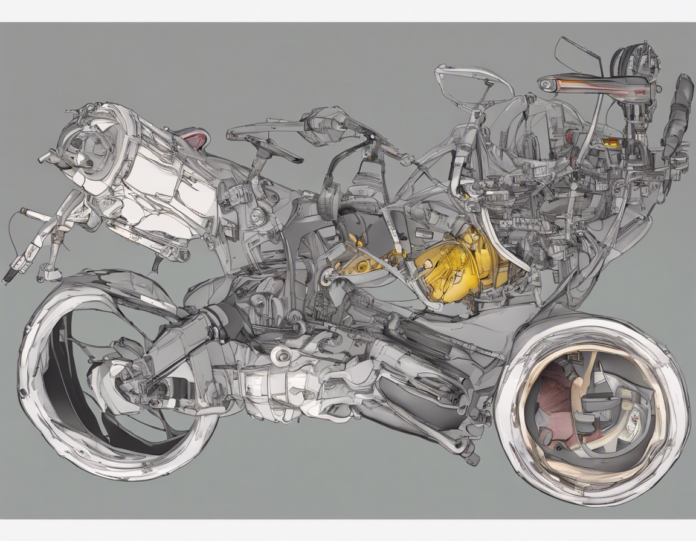Imagine staring up at the night sky, the vast expanse of darkness peppered with shimmering stars and distant planets. It’s a sight that has captivated humans for centuries, sparking curiosity and wonder about what lies beyond our own little planet. One of the most fascinating aspects of the universe is the galaxy – a massive collection of stars, planets, gas, and dust that is held together by gravity. In this blog post, we will delve into the world of galaxies, focusing in particular on the beauty and majesty of the big galaxy that we call home – the Milky Way.
Understanding Galaxies
Before we dive into the specifics of the Milky Way, let’s take a moment to understand what galaxies are. Galaxies are vast systems of stars, interstellar gas, dust, and dark matter that are bound together by gravity. There are billions of galaxies in the observable universe, ranging in size from small dwarf galaxies to massive giants that contain trillions of stars.
The Milky Way: Our Cosmic Home
The Milky Way is the galaxy that our solar system calls home. It is a spiral galaxy that is estimated to contain anywhere from 100 billion to 400 billion stars. The Milky Way gets its name from the band of milky light that is visible in the night sky, which is actually the combined glow of billions of stars.
Structure of the Milky Way
The Milky Way is a vast and complex galaxy, with a distinct structure that sets it apart from other galaxies in the universe. Here are some key components of the Milky Way:
- Bulge: The central region of the Milky Way, which contains a dense concentration of stars and a supermassive black hole at its center.
- Disk: The flat, rotating disk of the Milky Way where the spiral arms are located. Our solar system is located within the disk of the Milky Way.
- Spiral Arms: Long, curving arms that extend out from the center of the galaxy, filled with young stars, gas, and dust.
- Halo: The outer region of the Milky Way, which contains older stars and globular clusters.
Beauty of the Milky Way
One of the most breathtaking sights in the night sky is a clear view of the Milky Way stretching across the darkness. From Earth, we can see the Milky Way as a faint band of light, but in areas with little light pollution, the Milky Way shines brightly, revealing the intricate patterns of stars and dust that make up our galaxy.
Galactic Features
The Milky Way is home to a wide variety of stellar objects and phenomena that add to its beauty and complexity:
- Nebulae: Luminous clouds of gas and dust that are nurseries for new stars.
- Star Clusters: Groups of stars that are bound together by gravity, ranging from small open clusters to large globular clusters.
- Spiral Arms: Regions of the galaxy where stars are concentrated in long, curving arms that sweep out from the center.
- Black Holes: Dense regions of space where gravity is so strong that not even light can escape.
Exploring the Milky Way
In recent decades, advances in astronomy and space exploration have allowed us to learn more about the Milky Way and other galaxies in the universe. Telescopes and space probes have provided detailed images and data about the structure and composition of the Milky Way, giving us a deeper understanding of our cosmic home.
Key Discoveries
Some of the key discoveries about the Milky Way include:
- The presence of a supermassive black hole at the center of the galaxy.
- The existence of dark matter, a mysterious substance that makes up a significant portion of the galaxy’s mass.
- The identification of multiple spiral arms and star-forming regions within the Milky Way.
Frequently Asked Questions (FAQs)
1. What is the Milky Way made of?
- The Milky Way is primarily composed of stars, gas, dust, and dark matter.
2. How did the Milky Way get its name?
- The name “Milky Way” comes from its appearance as a hazy band of light stretching across the night sky.
3. Can we see the Milky Way from Earth?
- Yes, the Milky Way is visible from Earth as a faint band of light, but it is best seen in areas with little light pollution.
4. How big is the Milky Way?
- The Milky Way is estimated to be about 100,000 light-years in diameter.
5. Are there other galaxies like the Milky Way?
- Yes, there are many other spiral galaxies in the universe that are similar in structure to the Milky Way.
Understanding the beauty and complexity of the Milky Way is just the beginning of our exploration of the universe. This vast galaxy holds countless mysteries and wonders waiting to be discovered, making it a source of inspiration and fascination for scientists, astronomers, and space enthusiasts around the world. As we continue to study and learn more about the Milky Way, we gain a deeper appreciation for the cosmic dance of stars and galaxies that fills the night sky.








